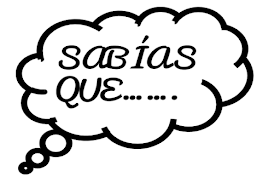A lo largo de esta semana pasada hemos celebrado la Semana de San Gregorio. Durante la misma hemos celebrado la historia del colegio San Gregorio, de nuestro colegio, la presencia de los hermanos en Aguilar de Campoo y la comarca, hemos disfrutado de momentos de convivencia, momentos de emoción, momentos de agradecimiento. Hemos celebrado la historia de cada uno de nosotros en el colegio.
Estamos seguros de que todos tenéis muchas cosas que os gusten del colegio, los alumnos de 5º y 6º nos lo han contado a través de tuits con el hashtag #SGmola, en el siguiente muro:
Created with Padlet
Ahora llega un momento importante en esta semana que es evaluarnos, saber vuestra opinión al respecto de la semana, de las actividades, de los momentos. Queremos saber qué os ha parecido y qué mejoraríais o incluiríais los próximos años. ¿Quieres echarnos una mano? Tómate tu tiempo para responder los dos cuestionarios.











